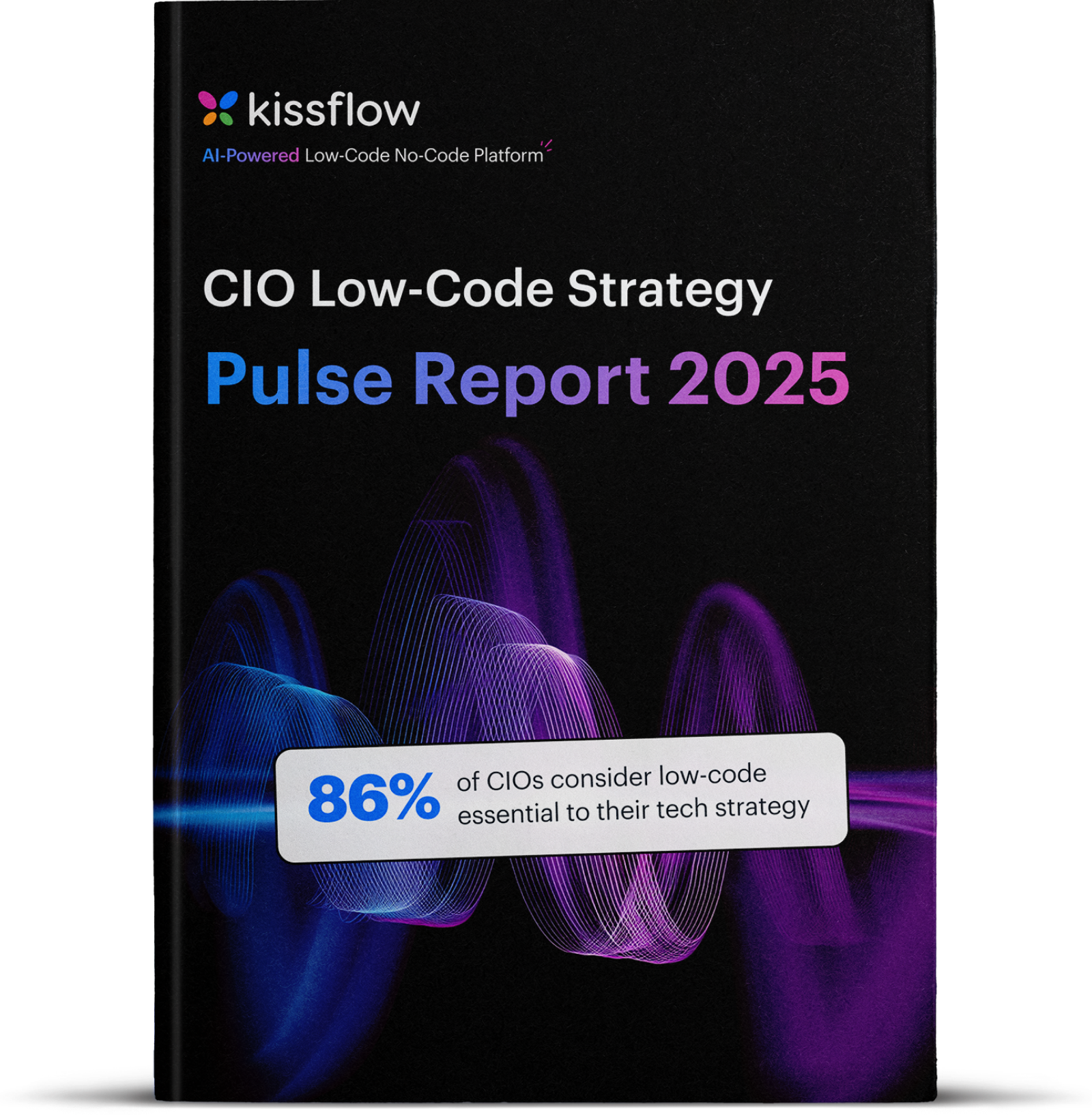
- >
- Oil and gas>
- Why geological data automation is the missing piece in your exploration strategy
Why geological data automation is the missing piece in your exploration strategy
You're sitting in a boardroom at 2 AM, staring at spreadsheets that should've been analyzed weeks ago. Your geologists are drowning in data from twelve different systems that don't talk to each other. Meanwhile, your competitors just announced they've cut their exploration timeline by 40%.
Sound familiar?
If you're a CTO, CIO, or leading digital transformation in oil & gas, you know this pain intimately. The industry generates massive amounts of geological data daily, but most companies are still handling it like it's 1995. You're not alone in feeling frustrated by the disconnect between having more data than ever and making decisions slower than ever.
Here's what you'll discover in this post: how geological data automation is changing the game, why the combination of low-code platforms and artificial intelligence (AI) is your secret weapon, and exactly how forward-thinking companies are cutting months off their oilfield exploration cycles. By the end, you'll have a clear roadmap for transforming your geological data workflows from a bottleneck into a competitive advantage.
The data deluge and bottlenecks in traditional oilfield exploration
Let's talk numbers for a second. A single seismic survey can generate terabytes of data. Add in well logs, GIS information, sensor readings from downhole equipment, and environmental monitoring data, and you're looking at information volumes that would make Netflix jealous.
But here's the kicker – most oil & gas companies are still treating this data like it's a filing cabinet problem.
Traditional geological data workflows create chaos in four predictable ways. First, data silos turn your organization into information islands. Your seismic data lives in one system, GIS integration happens in another, and sensor data gets trapped in a third system that nobody remembers how to update.
Second, manual data entry and processing eat up weeks of valuable time. Your geologists spend more time copying and pasting data than actually interpreting it. Third, human error creeps in everywhere. When you're manually transferring numbers between systems, mistakes happen. And in oil & gas, a decimal point in the wrong place can cost millions.
"Automation is now a boardroom discussion, with the C-suite driving strategy."
- Forrester Automation Survey, 2024
Finally, slow decision-making becomes the norm because everyone's waiting for someone else to finish their piece of the puzzle.
Here's a fictional but all-too-real example: imagine GeoTech Energy (not a real company, just an illustration) discovering what looks like a promising formation. Their seismic data suggests significant potential, but it takes them six weeks just to compile all the geological information needed for a drilling decision. By the time they're ready to act, a competitor has already secured drilling rights to an adjacent block.
This isn't about being unlucky. It's about geological data automation or the lack of it.
Optimize Upstream Operations with Intelligent Automation
The power duo: How low-code and AI are transforming geological workflows
Now, let's flip the script. What if your geologists could build their own data processing applications without waiting months for IT teams and resources? What if artificial intelligence could spot patterns in your seismic data that human eyes would miss?
That's where low-code platforms come in. Think of low-code as the Swiss Army knife of software development. It gives your domain experts the power to create custom applications using visual interfaces instead of writing thousands of lines of code. Your senior geologist who's been analyzing formations for twenty years can now build an application that automates her most repetitive tasks.
The beauty of low-code isn't just speed (though building apps in weeks instead of months is pretty sweet). It's about putting the power back in the hands of the people who actually understand the work. Your geologists know what they need better than any outside developer ever could.
Meanwhile, artificial intelligence is having its moment in geological analysis. Machine learning algorithms can identify patterns in seismic data that would take human analysts months to spot. Predictive analytics can assess resource potential based on historical drilling data and geological markers. Natural language processing can scan thousands of geological reports and extract key insights in minutes.
But here's where it gets interesting: low-code and AI work together like peanut butter and jelly. Low-code platforms provide the framework for deploying AI-powered applications quickly and efficiently. Instead of waiting for a two-year IT project, your team can have an AI-enhanced geological analysis tool up and running in weeks.
Use cases: Automating key geological data workflows
Let's get practical. Here are four ways companies are using geological data automation to transform their oilfield exploration processes.
Automated Seismic Data Processing and Interpretation
Remember those terabytes of seismic data we mentioned? Low-code platforms can create workflow automation that ingests this data automatically, runs quality checks, and feeds it directly into AI models for interpretation. Instead of your team spending weeks just organizing the data, they can focus on what the subsurface structures actually mean for your drilling strategy.
One fictional example: imagine PetroFlow Solutions (again, not real, just for illustration) reduced their seismic processing time from eight weeks to three days. Their AI algorithms now identify potential hydrocarbon reservoirs with 85% accuracy, compared to the 60% they achieved with manual interpretation alone.
Streamlining GIS Integration for Site Evaluation
Site evaluation used to mean juggling multiple maps, environmental data, and infrastructure information across different systems. Now, low-code platforms can automate the integration of various spatial data layers, creating comprehensive site analyses that update in real-time.
Your team can identify suitable drilling locations faster and complete environmental impact assessments with significantly more accuracy. When all your geological maps, environmental data, and infrastructure information talk to each other automatically, decision-making speeds up dramatically.
Automating Sensor Data Analysis for Real-time Insights
Modern drilling operations generate sensor data continuously. Low-code platforms can collect, process, and analyze this information as it comes in, while AI algorithms monitor for anomalies that might indicate equipment problems or geological surprises.
This means your drilling operations team gets early warning about potential issues instead of discovering them after something goes wrong. Real-time geological data automation turns reactive maintenance into predictive optimization.
Building Exploration Dashboards for Enhanced Visibility
Here's where everything comes together. Low-code platforms make it possible to create interactive exploration dashboards that consolidate all your key geological data, analysis results, and performance metrics in one place.
Your stakeholders get real-time insights without needing to understand the technical details of seismic interpretation or sensor analysis. The dashboard shows them what they need to know when they need to know it.
Benefits of automating geological data workflows with low-code and AI
The payoff from geological data automation goes way beyond just saving time (though that's definitely part of it).
Accelerated Exploration Cycles top the list. When your data workflows run automatically, site evaluation and well planning happen in days instead of months. Your team can evaluate more prospects, make faster decisions, and beat competitors to the best opportunities.
Improved Data Accuracy and Reliability comes naturally when you remove manual data handling. Automation reduces human error and ensures data integrity across all your systems. Your geological interpretations become more reliable because they're based on cleaner, more complete information.
Enhanced Decision-Making happens when your executives have access to real-time insights and comprehensive data analysis. Instead of making decisions based on week-old reports, they can respond to current conditions and emerging opportunities.
Your geologists spend their time doing geology instead of data entry. Your most valuable team members can focus on interpretation, strategy, and finding oil instead of wrestling with spreadsheets.
Reduced Operational Costs follow naturally from streamlined data workflows and faster timelines. When exploration cycles shrink from months to weeks, your carrying costs drop significantly. Better decision-making also means fewer dry holes and more successful drilling programs.
Better Collaboration emerges when everyone works from the same integrated platform. Your geologists, engineers, and executives can share data and insights seamlessly instead of playing telephone with information.
Streamline Pipeline and Transportation Management
Embracing the future of oilfield exploration with Kissflow
At Kissflow, we've seen firsthand how low-code platforms can transform geological data workflows for oil and gas companies. Our platform empowers your technical teams to build custom applications that automate everything from seismic data processing to exploration dashboards – all without needing a computer science degree.
What makes Kissflow particularly powerful for geological data automation is our visual workflow builder, which lets your geologists map out their processes exactly as they think about them. Our data integration capabilities connect all those siloed systems that have been driving you crazy. And our dashboard creation tools turn complex geological data into clear, actionable insights for decision-makers.
The companies seeing the biggest wins are those that let their domain experts (the geologists who understand the work) take the lead in building their automation solutions. When you combine their geological expertise with Kissflow's low-code capabilities, you get applications that actually solve real problems instead of creating new ones.
Want to see how geological data automation could work for your organization? Check out Kissflow's solutions specifically designed for the oil and gas industry.
The road ahead: Your competitive advantage awaits
The transformation happening in oilfield exploration isn't just about new technology. It's about fundamentally changing how geological data workflows operate. Low-code platforms and artificial intelligence are giving oil & gas companies the power to automate processes that used to take weeks, turning data from a bottleneck into a competitive advantage.
The benefits are clear: faster exploration cycles, more accurate data, better decision-making, and significant cost savings. Companies that embrace geological data automation now will have a substantial advantage over those still stuck in manual processes.
The future of digital transformation in oil & gas isn't some distant possibility. It's happening right now. The question isn't whether geological data automation will change your industry, but whether you'll be leading that change or scrambling to catch up. Your data is waiting. Your competitive advantage is one automation workflow away.
Want to see what geological data automation could do for your next project?
Related Topics:
- Enabling Real-Time Reservoir Management for Upstream Excellence
- Powering Environmental Risk Assessments in Oil Exploration With No-Code Applications
- How Well Operations Automation is Transforming Oil & Gas Field
Related Articles











